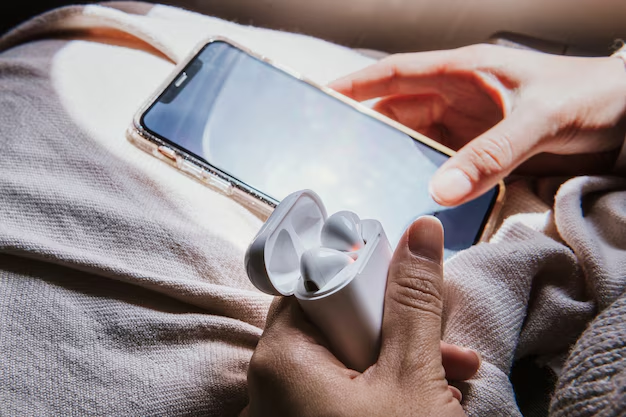From Playlist to iPhone Bliss: How to Seamlessly Transfer Music from iTunes
In a world where our smartphones are our constant companions, having your favorite tunes on your iPhone can make a mundane day magical. If you're wondering how to transfer music from iTunes to your iPhone, you're in the right place. Today, we'll explore not just the process, but everything in between — from setting up iTunes to troubleshooting common hiccups. Let's turn your iPhone into a pocket-sized concert hall.
Getting Started: Preparing iTunes and Your iPhone
Before you can enjoy those sweet melodies, a little prep work is necessary. Understanding and organizing both your iTunes library and iPhone settings is the first step.
Setting Up iTunes
1. Install or Update iTunes: To begin, ensure that iTunes is installed on your device. If it’s already there, make sure it's updated to the latest version.
2. Organizing Your Music: iTunes can be a powerful tool if you organize your music library effectively. Create playlists for specific moods, genres, or occasions. Use the search and sorting features to categorize your music.
Tip: Building a playlist makes the transfer process smoother and helps with music management on the iPhone. 🎵
Preparing Your iPhone
1. Check Storage: Before transferring your music, verify that you have enough storage on your iPhone. You wouldn’t want your phone to run out of space mid-transfer.
2. Charge Your Device: A fully charged iPhone ensures there's no interruption during the transfer.
The Transfer Process: Syncing Music from iTunes to iPhone
Now that everything is set, let's move the music!
Using USB Cable
This method is a classic and reliable way to transfer music.
1. Connect Your iPhone to Your Computer: Use the USB cable that came with your iPhone.
2. Open iTunes: It should automatically recognize your iPhone.
3. Access the Device Menu: On iTunes, select your device icon. This is typically found near the top-left corner of the iTunes window.
4. Go to the Summary Tab: Here you can see all the device information.
5. Click on “Music”: You'll find this option on the left-hand side.
6. Sync Music:
- Option 1: Sync entire music library.
- Option 2: Select individual playlists, artists, albums, or genres.
7. Apply and Sync: Click "Apply" or "Sync" at the bottom-right of iTunes.
Wireless Transfer Using iCloud
For those who prefer a wireless experience, iCloud offers a hassle-free alternative.
1. Enable iCloud Music Library: On your iPhone, go to Settings > Music. Turn on the "iCloud Music Library."
2. Subscribe to Apple Music or iTunes Match: This service helps keep your music in sync across all devices.
3. Open iTunes and Enable iCloud Music Library: On your computer's iTunes, navigate to Preferences > General. Check "iCloud Music Library."
Via Apple Music
Apple Music subscribers have an added advantage of streaming without local storage concerns.
1. Open the Music App on Your iPhone: All songs available in your iTunes will show up.
2. Download for Offline Listening: Any song can be downloaded directly onto your iPhone for offline use.
Troubleshooting Common Issues
Transferring music shouldn't be a daunting task, but technology isn’t infallible. Here’s how to handle common hiccups.
iPhone Not Recognized by iTunes
1. Restart Devices: Sometimes, a simple restart can resolve connectivity issues.
2. Update Software: Ensure both iTunes and your iPhone’s iOS are up-to-date.
3. Check USB Connection: Inspect the cable for any damage and ensure it is securely connected.
iCloud Music Library Not Syncing
1. Check Network Connection: A stable internet connection is essential for iCloud functionality.
2. Toggle iCloud Music Library: Turn off iCloud Music Library, then turn it back on.
3. Ensure Limited Space: Space issues might hinder iCloud syncing; consider freeing up storage.
Enhancing Your Music Experience
Once you’ve got your tunes in place, it's time to make the most of them.
Creating the Perfect Playlist
Music’s power can be all about the right mix.
1. Determine the Occasion: Business trip? Gym workout? Create playlists that match the occasion’s mood.
2. Mix and Match: Combine different genres and artists for an eclectic listening experience.
3. Update Regularly: Refresh your playlists periodically to keep the music fresh.
Exploring Third-Party Apps
If you want more than what iTunes offers, there are numerous music management apps available that integrate seamlessly with your iPhone.
1. Spotify: Known for its algorithm-driven playlists and vast selection.
2. Pandora: Great for discovering new artists and genres.
3. Tidal: Offers high-fidelity sound quality for the true audiophile.
The Ultimate Transfer Guide: Key Takeaways
To ensure a seamless process, keep these quick tips in mind.
- 🎧 USB or iCloud: Choose the method that best suits your needs.
- 🔋 Check Storage & Battery: Vital to a smooth transfer process.
- 💬 Playlist Management: Well-organized playlists enhance your music experience.
- 🎶 Explore Services: Consider Apple Music, iCloud, or third-party applications for extended functionality.
- 🔄 Troubleshooting: Simple checks and updates can resolve many common issues.
With this guide, you're not just transferring music — you're setting yourself up for an enriched audio journey. Whether you're chasing a morning pick-me-up or planning a relaxing evening, your iPhone can be your soundtrack. Now, let the music play! 🎵

Related Topics
- How Can I Transfer a Video From Iphone To Computer
- How Can I Transfer Apps From Iphone To Ipad
- How Can I Transfer Apps From One Iphone To Another
- How Can I Transfer Contacts From Iphone To Iphone
- How Can I Transfer Contacts From One Iphone To Another
- How Can I Transfer Data From Iphone To Android
- How Can I Transfer Data From Iphone To Iphone
- How Can I Transfer Data From Iphone To Samsung
- How Can I Transfer Files From Android To Pc
- How Can I Transfer From Iphone To Samsung